Rebuilding Philadelphia’s Gold Mountain: Themed Space and Living Community in Transition
Kathryn E. Wilson, Georgia State University
How are the competing interests of preservation and redevelopment of urban space to be reconciled, particularly when historically disadvantaged communities are involved? This paper explores this question in terms of the competing needs of the urban landscape embodied by historic structures and recent developments in the community of Philadelphia’s Chinatown by focusing on 1.efforts of the local Chinatown CDC to draw on the preservation, commemoration, and interpretation of its own heritage and history to promote community-driven investment and 2. the proposed development of “Chinatown North” abutting (and sometimes conflicting with) an emerging loft district and an attendant adaptive reuse initiative. While the former seeks to celebrate a dense historical landscape that, although seemingly intact, is intermittently preserved, the latter seeks to intervene in the historical landscape, building housing and green space to revitalize urban blight with a link to the themed historic past. Thus the landscape of Philadelphia’s Chinatown is deeply hybrid, compressed yet fragmented, embodying the dilemmas of ethnic themed urban space in economic and social transition. Its hybridity embodies its multiple lives as an historic neighborhood, themed ethnic space, touchstone for former residents, and a launch for new immigrants.
Philadelphia’s Chinatown, like many in the eastern US, had its roots in the “driving out” of Chinese from the western states that followed the completion of the Transcontinental Railroad in 1869 and culminated in the Exclusion Act of 1882. Throughout the 1870s, violence and intimidation against Chinese laborers in California, Washington, and Oregon sent many east to cities like Chicago, St. Louis, New York, and Boston (Pfaelzer 2008). In Philadelphia Chinese merchants found a home along the 900 block of Race Street, adjacent to the central business district, where multiple generations of the same extended family or kin network -- mostly single men aged 25-60, since women were largely barred from entry – lived in tightly shared quarters (Culin 1887, Census 1910) (Figure 1).
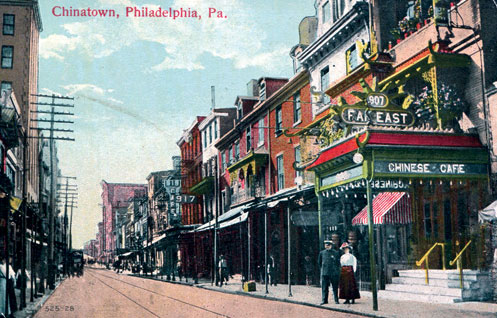
Figure 1. 900 block of Race Street, Chinatown, Philadelphia Pa postcard, ca. 1890. Author’s collection.
By 1900 this block and its surrounds exemplified the basic pattern of spatial use that came to characterize the Chinatown cultural landscape (Yip 1995, 2001). Structured primarily around the templates of the late 19th century commercial block and the Philadelphia rowhouse, the spaces of Chinatown were mixed residential-commercial use. Each building was anchored by first floor businesses – laundries, groceries or other shops, and eventually restaurants – that provided livelihood and a focus of public commercial activity. The second, third and attic floors were devoted to living quarters as well as a variety of social functions: association and common room, often family, for recreational activities such as gambling, feasting, gossip and tea drinking. Sundays animated the spaces of Chinatown, as men from around the region gathered on their one day off. While much of early Chinatown’s social and cultural activities were hidden from the larger public’s notice, in second floor rooms, attics, basements, and back rooms, the community also claimed the public street as a space for Chinese themed activities. By the 1920s and 30s, Chinatown businessmen and leaders were actively combating police attention and negative publicity by creating exotic themed space, a kind of “strategic self-orientalism” that would come to construct and characterize much of the community’s identity over time (Record 1936, Light 1974, Umbach and Wishnoff 2008) (Figure 2).

Figure 2. 900 block Race Street today. Photograph by author.
The bachelor society became a family community after World War II, and the neighborhood landscape changed to accommodate this change. Boarding houses and rowhouses on streets adjacent to 900 Race were increasingly incorporated into the landscape of Chinatown as residents purchased homes. Churches, businesses, and social and cultural organizations were established to improve neighborhood life, preserve Chinese culture, and provide services to growing numbers of immigrants. This growth in family and community life led to the creation of new spaces in Chinatown, such as Holy Redeemer Catholic Church and School, and the Chinese Christian Church and Center (CCCC), which, along with new businesses, served the needs of American-born youth. These spaces, much more than outward symbols of ethnicity, represent the identity of Chinatown to second and third generation Chinese, places that embody remembered histories or lived community relationships, such as family homes, churches and temples, a senior citizen center, family associations, a district fire station, family businesses, second floor apartments where they were born. This lived neighborhood also contrasts dramatically with the neighborhood as a themed cultural attraction, identified by primarily restaurants and gift shops. The lived neighborhood is also largely the result of continued activism on the part of the community since the 1960s to preserve important neighborhood institutions and claim territory in the face of urban redevelopment.
This activism was originally galvanized in the post-war period when the city’s strategies of “slum clearance” were escalated to make way for downtown attractions and a new system of cross-town expressways to move suburban traffic into and through the city. By the 1960s, widespread relocations and demolition of housing put Chinatown residents on alert. A proposed expressway along Vine Street, Chinatown’s northern border, would entail the destruction of a beloved neighborhood church, school, and playground, Holy Redeemer Catholic Church. Various Chinatown constituents formed a coalition to “Save Chinatown” and pursued a variety of strategies, from protest to political lobbying. While the expressway was still completed, it was delayed over 15 years, the church was saved, and a new community development movement in Chinatown was born, represented by the Philadelphia Chinatown Development Corporation (PCDC). Today, memories of this struggle inform current attempts at community development, and “Save Chinatown” is often invoked when new threats face the community (most recently, a proposed nearby casino). In this respect, memory serves as a means to maintain a tradition of activism by drawing on the legacies of the “Save Chinatown” movement in its various incarnations. It also marks the changes in the community and its landscape over time as a result of that struggle.
Those changes were largely the result of PCDC’s active work with city agencies, such as the Philadelphia City Planning Commission (PCPC) and the Redevelopment Authority (RDA), to rezone, plan for, and redevelop Chinatown. PCDC received designation as a developer and secured special zoning for Chinatown as a distinct district in the early 1970s. This new zoning allowed PCDC to control what kinds of businesses existed in Chinatown and the nature of new structures that were built. Zoning required that all structures have a specific community benefit, as determined largely by PCDC. PCDC rejected historical designation as a viable option for the neighborhood, then worked for several decades to buy back land from the RDA and develop it for community needs, specifically mixed income housing, senior housing, and some mixed use development (Figures 3 and 4).
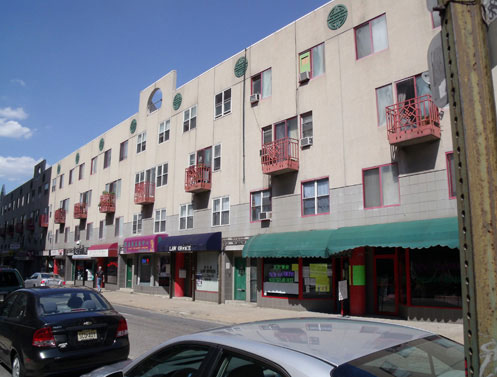
Figure 3. Gim San Plaza, an example of PCDC’s themed mixed-use development on formerly demolished lots. Photograph by author.
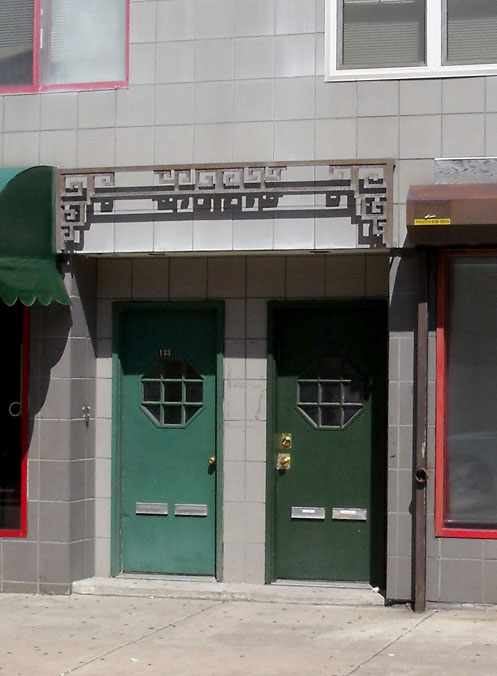
Figure 4. Detail of Gim San Plaza. Photograph by author.
Of particular importance were a series of housing projects constructed on lots where early demolitions had taken place. In addition to housing, PCDC also invested in improvements that ethnically marked the landscape as Chinese-themed. The cornerstone of this theming was the Friendship Gate, constructed in 1983-4, which forms a gateway to the southern entrance to Chinatown at 10th and Arch Streets (Figure 5). Like those before them, Chinatown’s leaders in the late 20th century employed a strategy of themed space to help insure the neighborhood’s survival and identity. Over time, the Gate has come to symbolize Chinatown almost exclusively in tourist brochures and websites and is perhaps the most photographed landmark in the neighborhood. In Chinatown, then as in other branded neighborhoods, themed space like the Gate is a fragment that stands for the whole, excluding disharmonious elements in the name of cultural authenticity or historic “integrity” becoming a hyperreal truth in of itself (Hamer 1998, Lukas 2007, Jameson 1990). Themed space been a mode of community preservation in the face of ongoing urban renewal but it also effaces the other elements of the neighborhood that fit less neatly into an historic or even historically timeless image of Chinatown, elements that are critical to the neighborhood’s survival as a family oriented living community. In addition, these intentionally themed structures also live amidst other less-Orientalized spaces: condos, postmodern Asian bazaars, sleek contemporary sushi and tea houses, and stock row and town housing.
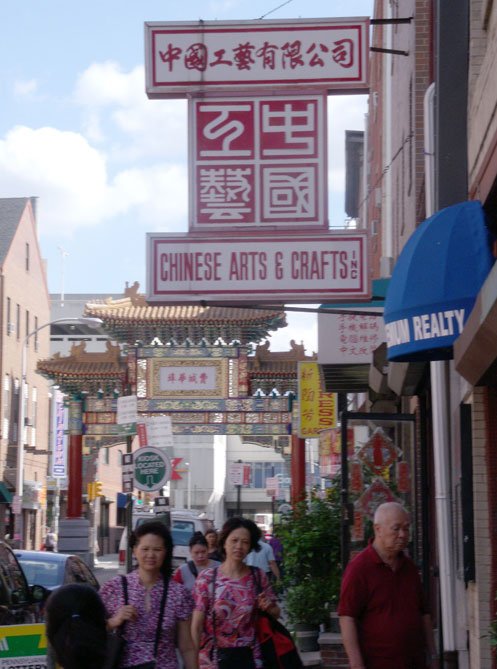
Figure 5. 10th Street showing the Friendship Gate. Photograph by author.
The tensions around theming, history, and community needs are more acute as Chinatown contemplates larger urban changes and forces, both for redevelopment and preservation. These tensions are embodied by the challenges in redeveloping an area north of Vine Street, where the blighted landscape presents a different but related set of issues and competing thematic imperatives, what PCDC now calls “Chinatown North.” Here sits Holy Redeemer Church, a site of history and memory. But more frequently and dramatically it is the site of Chinatown’s future, the only area into which Chinatown can grow (the neighborhood is blocked in other directions by Independence Mall to the east, Gallery East to the south, and the Philadelphia Convention Center to the west) (Figure 6). Planned expansion of the neighborhood focuses on constructing mixed income housing (a critical need in a neighborhood that still serves as an entry point for new immigrants and a symbolic return for retirees) and a community center housed in a modern glass high rise with no discernible “Asian” characteristics. John Chin, the executive director of PCDC, describes the center as a “statement building” signaling the vibrancy of the Chinatown community and resonating with contemporary Asian architecture:
the identity of Chinatown, some people, well the stereotype is red and gold with pagoda eaes and that exotic image of Chinatown. Right, but if you go to Asia now, you don’t see that (laughter). I mean you see the Forbidden City… That is also old. So what’s the new design and trends for Asian culture and Asian communities? (Chin 2009).
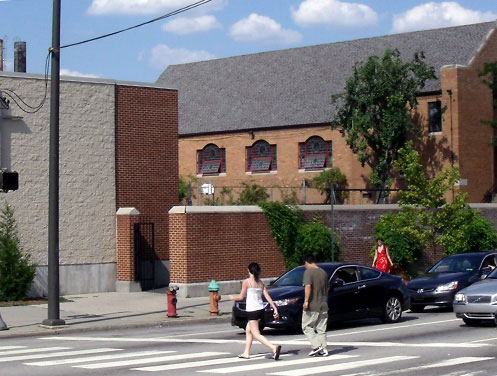
Figure 6. Crossing Vine Street to Holy Redeemer Catholic Church, 2009. Photograph by author.
The so-called “Eastern Tower” would be a 23-story, 265-foot-high residential and office tower, with a community center on the ground floor, on two parcels at the northwest corner of Vine and 10th streets. As John Chin explains, the lack of identifiable Chinese elements is deliberate: “I always believe that it comes down to, well, we are the ones who should be telling the story. If we tell the story then we should feel safe that anybody that comes and visits should walk away with the right feel and history and the attitude and sense of this community”(Chin 2009).
The planned expansion of the neighborhood north of Vine is increasingly conflicting with a parallel movement to gentrify a former warehouse area northwest of vine now known as Callowhill. Callowhill and Chinatown North initially collided in 2004 when the Delaware Valley Regional Planning Commission began a planning process for Chinatown North. The point of contention was and still is the fate of a 19th century viaduct historically used by the Pennsylvania Railroad that cuts diagonally across the area in a larger Y pattern (Figure 7). Darkened with age and overgrown with weeds, it is seen by Callowhill residents as a valuable historical feature of the landscape and possible site for an elevated greenway along the lines of New York City’s Highline. To Chinatown residents, it is an unsightly, hulking edifice which casts a long shadow over an already blighted neighborhood, impeding redevelopment (Figure 8). While Callowhill residents seek transformation of the viaduct, PCDC would like to see the edifice destroyed to make way for a neat residential grid populated with new mixed-income housing (Delaware Valley 2009).
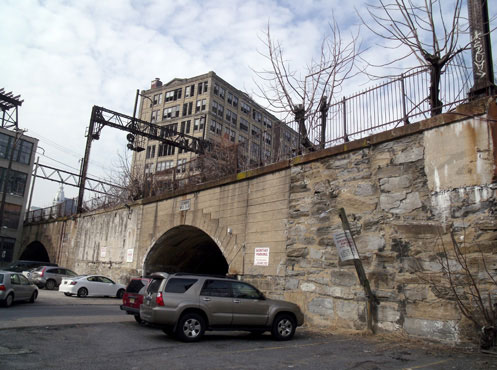
Figure 7. Reading Viaduct. Photograph by author.
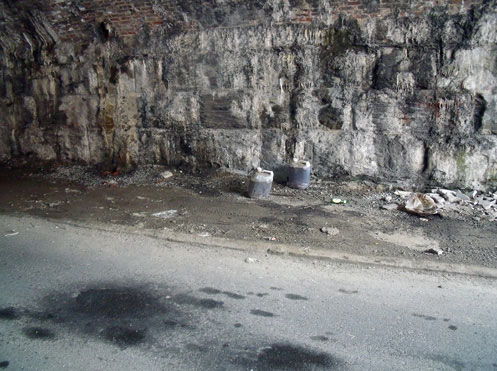
Figure 8. Under the Reading Viaduct. Photograph by author.
The conflict over the viaduct would seem to cast PCDC as an adversary to history and preservation, but this is not actually the case. Although John Chin, PCDC’s executive director, told me in 2009 that “we can’t afford history,” PCDC has pursued historical strategies in a variety of ways over the years. For over a decade, the community sought and was finally granted in 2010 a Pennsylvania state historical marker for the area. The marker reads: “Founded in the 1870s by Chinese immigrants, it is the only Chinatown in Pennsylvania. This unique neighborhood includes businesses and residences owned by and serving Chinese Americans. Here, Asian cultural traditions are preserved and ethnic identity perpetuated.” The marker does not mention anything about the struggle of the community or the historically contingent nature of the surrounding neighborhood, perpetuating the essentialized Chineseness of themed nature without signaling how vulnerable that themed space has been, or the community’s efforts to maintain and preserve it. Nevertheless, for some in Chinatown, the marker represents an important recognition of the neighborhood: “This is an exciting step for the Chinatown community because it is finally receiving public acknowledgement of its historical significance. It is important that we continue to educate the public that Chinatown is a historic, residential neighborhood, and not just a tourist attraction” (Chin 2009).
PCDC has likewise been pursuing funding from local preservation sources to document and preserve meaningful spaces in the Chinatown. Most recently, PCDC received a grant from the Preservation Alliance of Greater Philadelphia to complete a video project collecting residents’ place memories. This project highlighted the importance of less-visible places such as churches, playgrounds, and family associations. Funding has also been secured to restore the façade of the former Far East Restaurant, 907-909 Race, which was for many decades a visible neighborhood landmark and the most “Chinesey” façade of Chinatown’s historic block, featuring an elaborate second floor balcony adorned with brightly painted decorative ironwork and phoenixes (Figure 9). These preservation activities are being pursued hand in hand with PCDC’s plans for new streetscape enhancements through its participation in the National Trust’s Main Street Program. In 2011 PCDC installed “foo dog” statues at the northern entrance to the historic core of the neighborhood at 10th and Vine Streets (geographically they speak to the Gate to the south) and enhanced the streetscape with bronze medallions in the shapes of the Chinese zodiac, pedestrian lights in the style of a “Chinese palace lantern,” trees, and cultural elements “designed to promote the ethnic identity of the neighborhood” (PCDC website 2011). These elements are Chinese-themed, but within an aesthetic that PCDC feels is more contemporary and less literal than past efforts:
We have the Streetscape Project you know, we’re not doing the bright red for our street lamps but we’re doing a muted traditional kind of red that’s almost brownish red that you see in a lot of artwork during a certain time period. We’re moving more towards classic Chinese that’s less about color and more about texture, feel and design…. some people are more sensitive to the message, right, that this sends, the ongoing stereotypes…(Chin 2009).
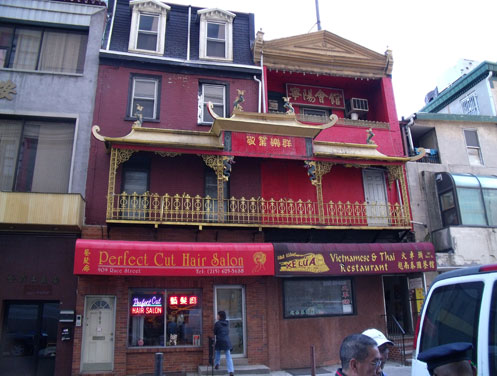
Figure 9. 907-909 Race Street, site of the former Far East Restaurant, targeted for restoration. Photograph by author.
For Chinatown developers, the task is to carefully balance the need to maintain themed space and identifiable cultural distinctiveness with changing community needs, aesthetics, and empowerment.
Chinatown’s historic and contemporary challenges illustrate the hybrid needs and strategies that characterize ethnic urban space as a themed attraction but also a living community for multiple generations of immigrant families. This hybridity presents dilemmas when preservation and development are considered. To what extent are the two processes compatible or competing? How much coherence and cohesiveness can be expected of a living community which must serve the needs of everyday life over its larger image making?
References
Chin, John. 2009. Interview by author, Philadelphia, PA, July 2009.
“Chinatown Modernizes Past Glory: Exotic Splendors Live Again as Race and Ninth Sts. Area Woos Fame of Gay 90s,” Philadelphia Record, June 2, 1936.
Stewart Culin. 1887. China in America: A Study in the Social Life of the Chinese in the Eastern Cities of the United States. Philadelphia.
Delaware Valley Regional Planning Commission. 2004. Chinatown Neighborhood Plan. Philadelphia: Delaware Valley Regional Planning Commission.
Hamer, David. 1998. History in urban places: the historic districts of the United States. Columbus: Ohio State University Press.
Jameson, Frederic. 1990. Postmodernism, or, The Cultural Logic of Late Capitalism. Durham: Duke University Press.
Ivan Light. 1974. “From Vice District to Tourist Attraction: The Moral Career of American Chinatowns, 1880-1940,” The Pacific Historical Review 43: 3 (August 1974): 367-394;
Lukas, Scott A., ed. 2007. The themed space: locating culture, nation, and self. Lanham: Lexington Books.
PCDC website. 2011.”Project Updates” and “Beautification Project.” http://chinatown-pcdc.org/pcdc-news/project-updates/, http://chinatown-pcdc.org/pcdc-news/beautification-project/. Accessed April 23, 2012.
Jean Pfaelzer. 2008. Driven Out: The Forgotten War against Chinese Americans. Berkeley: University of California Press.
Thirteenth Census of the United States, 1910. Philadelphia Ward 10.
Umbach, Greg and Dan Wishnoff. 2008. “Strategic Self-Orientalism: Urban Planning Policies and the Shaping of New York City’s Chinatown, 1950-2005,” Journal of Planning History 7:3(2008): 214-238.
Yip, Christopher Lee. 1995. “Association, Residence, and Shop: An Appropriation of Commercial Blocks in North American Chinatowns,” in Elizabeth C. Cromley & Carter L. Hudgins, eds. Gender, Class, and Shelter: Perspectives in Vernacular Architecture, V., (Knoxville: University of Tennessee Press, 1995), pp. 109-117.
Yip, Christopher Lee. 2001. “California Chinatowns: Built Environments Expressing the Hybridized Culture of Chinese Americans,” in Nezar AlSayyad, ed., Hybrid Urbanism: On the Identity Discourse and the Built Environment (Westport, CT: Praeger, 2001), pp. 67-82.
Author Biography
Kathryn Wilson has a Ph.D. in folklore and folklife from the University of Pennsylvania and is associate professor of history at Georgia State University. She is currently at work on a book about Philadelphia’s Chinatown with the working title, “Ethnic Renewal: Space, Place, and Struggle in Philadelphia’s Chinatown.”

